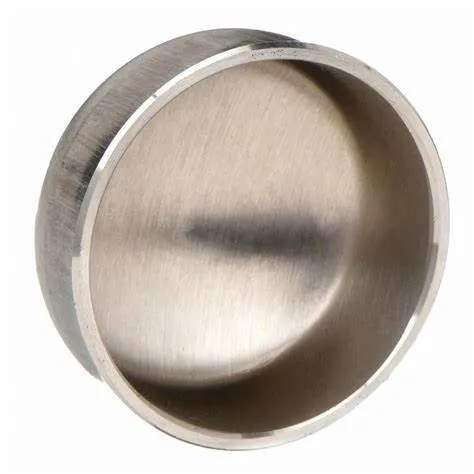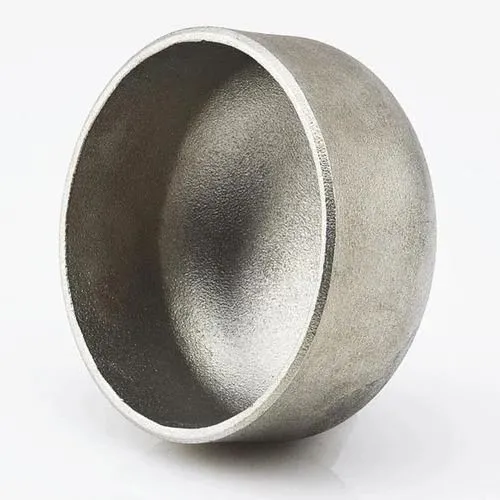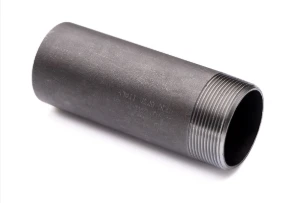JIS B2311 ایک جاپانی صنعتی معیار ہے جو بٹ ویلڈنگ پائپ فٹنگز کا احاطہ کرتا ہے، بشمول پائپنگ سسٹم میں استعمال ہونے والے کیپس۔ بٹ ویلڈنگ کیپس پائپ کے سرے کو بند کرنے، رساو یا آلودگی کو روکنے کے لیے مہر فراہم کرنے کا مقصد پورا کرتی ہیں۔ یہاں JIS B2311 بٹ ویلڈنگ کیپس کا تعارف ہے:
- 1. JIS B2311 Standard:
- - JIS B2311 معیار پائپنگ سسٹم میں بٹ ویلڈنگ کی متعلقہ اشیاء بشمول کیپس کے ڈیزائن، طول و عرض، مواد، مینوفیکچرنگ اور جانچ کے تقاضوں کی وضاحت کرتا ہے۔
- - معیار اس بات کو یقینی بناتا ہے کہ JIS معیارات کے مطابق تیار کردہ کیپس معیار کے معیار پر پورا اترتے ہیں اور پائپنگ کے دیگر اجزاء کے ساتھ مطابقت رکھتے ہیں۔
- 2. بٹ ویلڈنگ کیپ:
- - ایک بٹ ویلڈنگ کیپ، JIS B2311 کے مطابق، پائپ کے سرے کو محفوظ طریقے سے ڈھانپنے اور سیل کرنے کے لیے ڈیزائن کیا گیا ہے، جو تحفظ فراہم کرتا ہے اور پائپنگ سسٹم کی سالمیت کو برقرار رکھتا ہے۔
- - کیپس کا استعمال ان حالات میں کیا جاتا ہے جہاں پائپ کے سرے کو مستقل طور پر یا عارضی طور پر، رساو، آلودگی کو روکنے یا سسٹم کو مکمل کرنے کے لیے بند کرنے کی ضرورت ہوتی ہے۔
- 3. مواد اور تعمیر:
- - JIS B2311 تصریحات کے تحت بٹ ویلڈنگ کیپس مختلف مواد جیسے کاربن سٹیل، سٹینلیس سٹیل، اور الائے سٹیل میں دستیاب ہیں تاکہ درخواست کی مختلف ضروریات کو پورا کیا جا سکے۔
- - یہ ٹوپیاں معیاری تعمیراتی طریقوں کا استعمال کرتے ہوئے تیار کی جاتی ہیں تاکہ پائپ کے سرے پر ویلڈ کیے جانے پر مضبوط اور رساو سے پاک کنکشن کو یقینی بنایا جا سکے۔
- 4. درخواست اور فوائد:
- - بٹ ویلڈنگ کیپس مختلف صنعتوں میں ایپلی کیشنز تلاش کرتی ہیں، بشمول تیل اور گیس، کیمیائی عمل، پانی کی صفائی کے پلانٹس، اور مزید جہاں پائپ کے سروں کو محفوظ طریقے سے بند کرنے کی ضرورت ہے۔
- - کیپس پائپ کے سروں کو ماحولیاتی عناصر سے تحفظ فراہم کرتی ہیں، آلودگی کو روکتی ہیں، اور پائپنگ سسٹم کی صفائی اور سالمیت کو برقرار رکھنے میں مدد کرتی ہیں۔
- 5. تنصیب اور ویلڈنگ:
- - مناسب تنصیب کے طریقے، بشمول درست سیدھ، پائپ کے سرے کی تیاری، اور ویلڈنگ کی تکنیک، بٹ ویلڈنگ کیپس کو نصب کرتے وقت ضروری ہیں تاکہ سخت اور لیک پروف مہر کو یقینی بنایا جا سکے۔
- - ویلڈنگ پائپوں میں کیپس کو جوڑنے کا ایک عام طریقہ ہے، جو ایک محفوظ اور مستقل بندش فراہم کرتا ہے جو دباؤ، درجہ حرارت کے تغیرات، اور نظام کے اندر سیال کے بہاؤ کو برداشت کر سکتا ہے۔
- خلاصہ یہ کہ JIS B2311 بٹ ویلڈنگ کیپس پائپنگ سسٹم میں پائپ کے سرے کو محفوظ طریقے سے سیل کرنے اور محفوظ کرنے کے لیے استعمال ہونے والے اہم اجزاء ہیں۔ یہ کیپس معیاری تقاضوں کے مطابق صنعتی ایپلی کیشنز کے اندر معیار، وشوسنییتا اور مطابقت کو یقینی بناتی ہیں جہاں پائپ کی بندش اور تحفظ ضروری ہے۔
What Is a Butt Welding Cap and How Is It Used in Industrial Piping?
In industrial piping systems, end-of-line sealing and branch closures require robust solutions. A butt welding cap serves as a critical component for terminating pipes securely. By providing a seamless, welded closure, this fitting maintains system integrity, prevents leaks, and supports compliance with industry standards.
What Is a Butt Welding Cap?
A butt welding cap—also called a pipe end cap or buttweld end cap—is a round fitting designed to close off the end of a pipe. It’s manufactured to match the pipe’s outer diameter and schedule, with either a hemispherical or flat face. To install, both the pipe end and cap are beveled to form a V‑groove, enabling full‑penetration, fusion welds. Common materials include carbon steel, stainless steel, nickel alloys, and other engineered grades, chosen to satisfy pressure, temperature, and corrosion‑resistance requirements.
How Is Butt Welding Cap Used in Industrial Piping?
Butt welding caps find application across oil & gas, petrochemical, power generation, water treatment, and general process industries for both permanent and temporary closures. During hydrostatic testing, technicians install caps to seal off sections of piping while monitoring for leaks. In new construction or retrofit projects, caps terminate branch lines, future tie‑in spools, or dead‑end mains until system expansion. Welders prepare each joint by cleaning and beveling surfaces, aligning the cap precisely, and executing a root pass followed by filler passes per the qualified Welding Procedure Specification (WPS). Post‑weld heat treatment and non‑destructive examination (NDE)—such as radiography or ultrasonic testing—verify weld integrity and compliance with ASME B16.9 and related standards. Additionally, temporary caps enable safe isolation during maintenance, allowing for segment testing and dewatering under regulatory protocols.
Benefits and Best Practices
Butt welding caps offer a smooth‑bore transition that minimizes flow disruption and stress concentration. Their full‑penetration welds deliver exceptional structural strength and leak resistance. To optimize performance, engineers should:
Select caps with matching material grades and wall thicknesses
Adhere to proper bevel angles and joint fit‑up tolerances
Follow qualified WPS protocols rigorously
Consider cladding or protective coatings in corrosive environments to extend service life
Regular inspection and thorough documentation ensure long‑term reliability and safe operation under demanding conditions.
Butt welding caps are indispensable components for achieving durable, leak‑proof pipe terminations in a wide range of industrial applications.
Butt Welding Cap FAQs
What is a butt welding cap?
|
What materials are commonly used?
|
What standards govern butt welding caps?
|
How are butt welding caps installed?
|
Where are butt welding caps typically used?
|
What are the advantages of threaded caps?
|
















